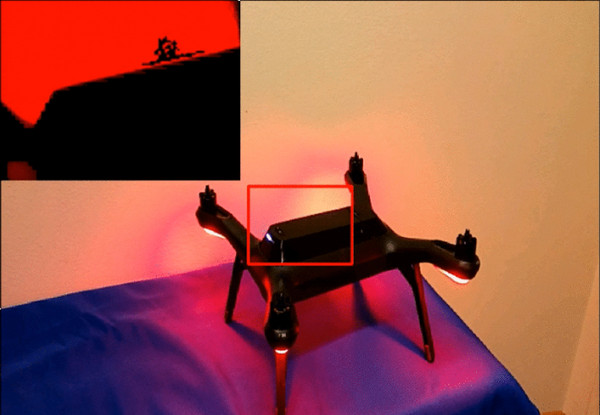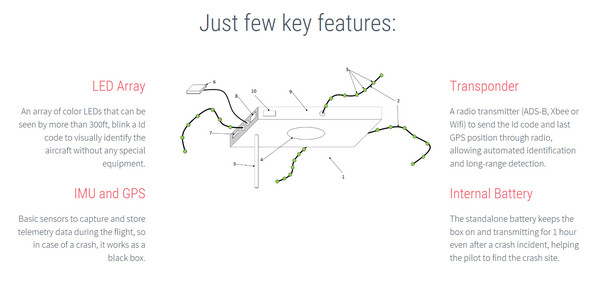In late July this year, a Chinese tourist surnamed Yang accidentally crashed an unmanned drone into Taipei 101, sparking national security concerns in Taiwan. On average the 508 meter tall landmark of Taipei is hit by three drones per month, according to a Taiwan News reports.
Drone incidents have been on the rise in U.S. too. The Federal Aviation Administration (FAA) received more than 650 filed reports in 2015, nearly triple the number compared to last year, reported Imaging Resource.
Not all drone owners are responsible as Yang, who claimed responsibility over the accident. Some irresponsible drone owners might even flee the scene of a crash.
 |
|
University of California, Berkley researchers develop LightCense a multi-colored LED light. (All Photos Courtesy of LightCense) |
To track down drone owners, University of California, Berkley researchers are working on a potential solution. The project, LightCense, is installing a multi-colored LED light that emits a unique lighting pattern onto drones, which functions similarly to a registered the individual drone owner license plate that law enforcements can look up in the future.
There are still ways to bypass the design, though. One hack method would be simply putting tape over the LED array or removing it entirely. Also if the drone is resold, the drone needs to be re-registered, a process few drone owners would be willing to participate in.
 |
|
Design of the unique LED license plate system, Lightcense. |













